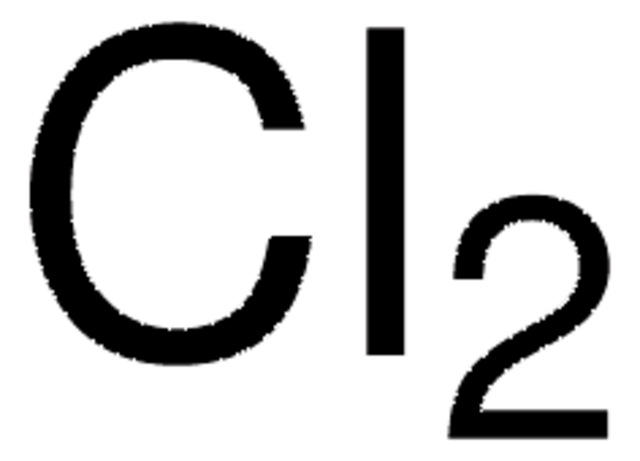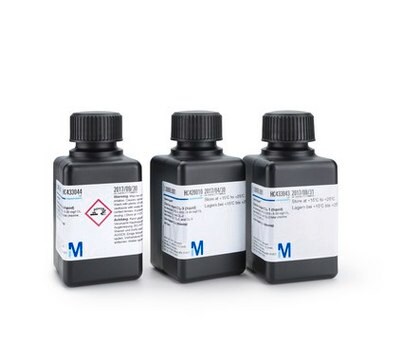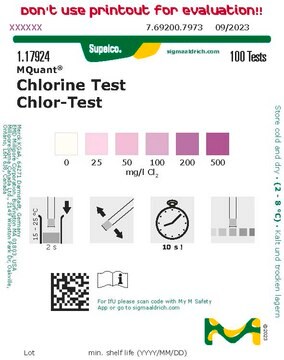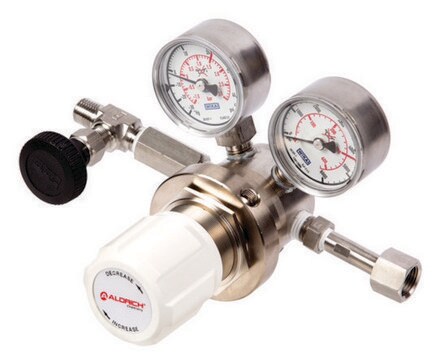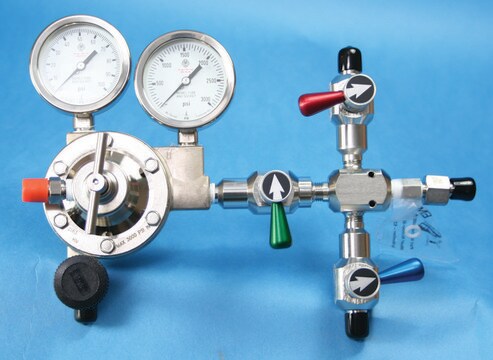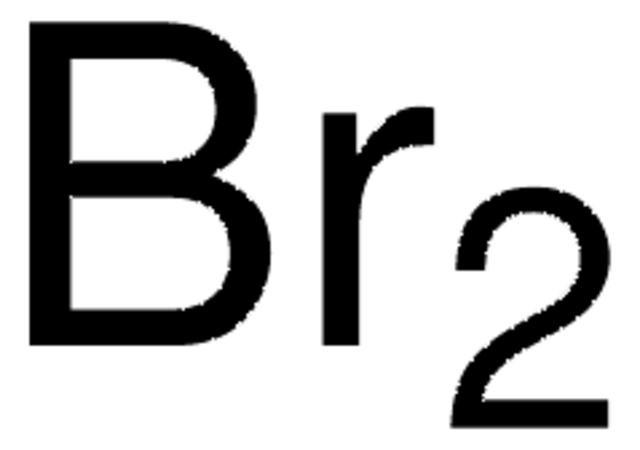Wichtige Dokumente
22752
Chlor
puriss., ≥99.8%
Synonym(e):
Chlorine gas
About This Item
Empfohlene Produkte
Dampfdichte
2.48 (vs air)
Qualitätsniveau
Dampfdruck
4800 mmHg ( 20 °C)
Qualität
puriss.
Assay
≥99.8%
Widerstandsfähigkeit
1E9 μΩ-cm, 20°C
Abdampfrückstand
≤40 ppm
bp
−34 °C (lit.)
mp (Schmelzpunkt)
−101 °C (lit.)
SMILES String
ClCl
InChI
1S/Cl2/c1-2
InChIKey
KZBUYRJDOAKODT-UHFFFAOYSA-N
Suchen Sie nach ähnlichen Produkten? Aufrufen Leitfaden zum Produktvergleich
Verpackung
Hinweis zur Analyse
Sonstige Hinweise
Signalwort
Danger
Gefahreneinstufungen
Acute Tox. 2 Inhalation - Aquatic Acute 1 - Eye Irrit. 2 - Ox. Gas 1 - Press. Gas Compr. Gas - Skin Irrit. 2 - STOT SE 3
Zielorgane
Respiratory system
Lagerklassenschlüssel
2A - Gases
WGK
WGK 2
Flammpunkt (°F)
Not applicable
Flammpunkt (°C)
Not applicable
Persönliche Schutzausrüstung
Eyeshields, Faceshields, Gloves
Hier finden Sie alle aktuellen Versionen:
Besitzen Sie dieses Produkt bereits?
In der Dokumentenbibliothek finden Sie die Dokumentation zu den Produkten, die Sie kürzlich erworben haben.
Kunden haben sich ebenfalls angesehen
Unser Team von Wissenschaftlern verfügt über Erfahrung in allen Forschungsbereichen einschließlich Life Science, Materialwissenschaften, chemischer Synthese, Chromatographie, Analytik und vielen mehr..
Setzen Sie sich mit dem technischen Dienst in Verbindung.